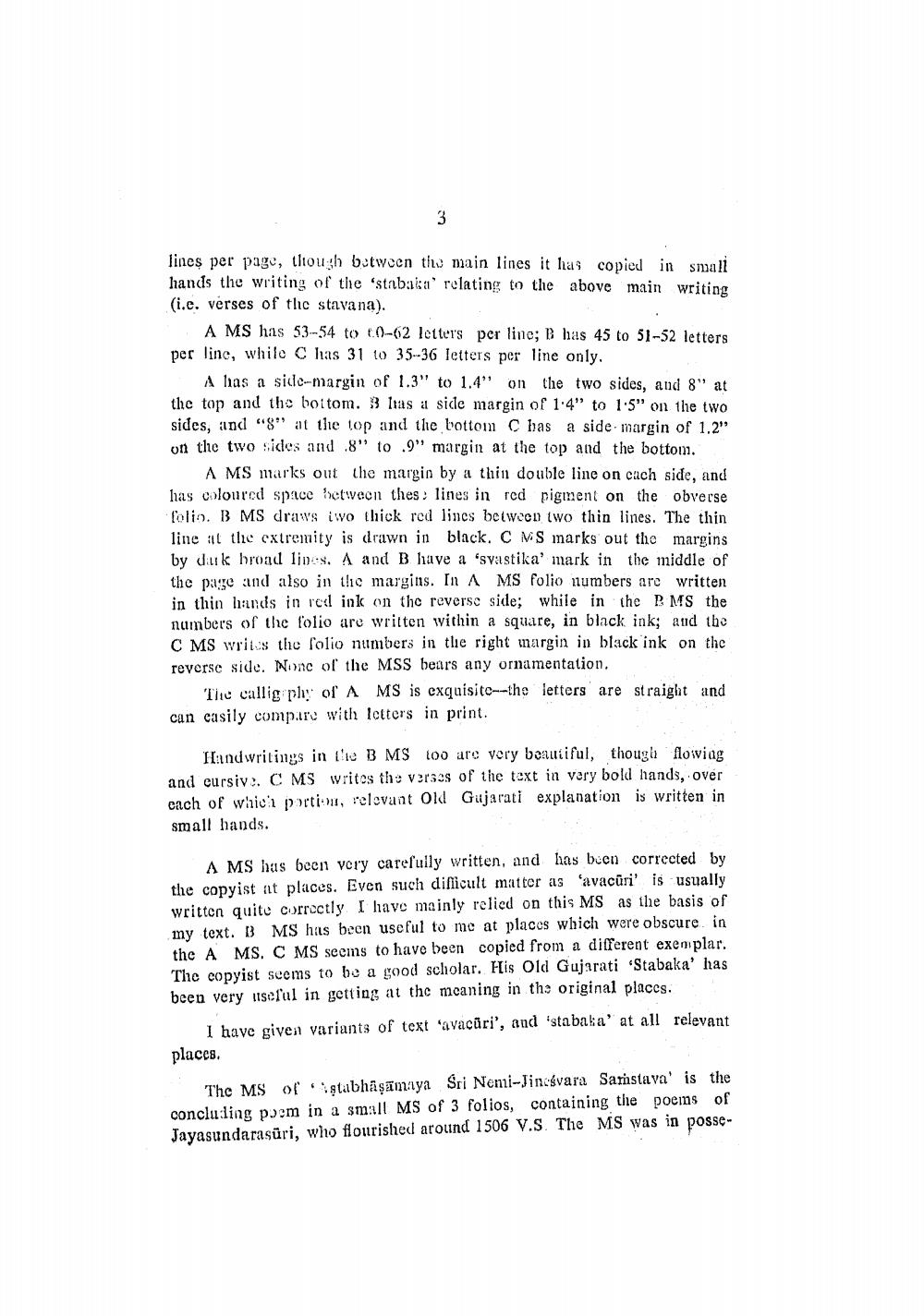________________
lines per page, though butween the main lines it has copied in small lands the writing of the 'stabata' relating to the above main writing (i.e. verses of tlic stavana).
A MS has 53-54 to 60-62 letters per line; D has 45 to 51-52 letters per line, whilo C has 31 10 35-36 letters per line only.
A has a side-margin of 1.3" to 1.4" on the two sides, and 8" at the top and the bottom. 3 Iras a side margin of 1.4" to 1.5" on the two sides, and "8" at the top and the bottom C has a side margin of 1.2" on the two sides and .8" to .9" margin at the top and the bottom.
A MS marks out the margin by a thin double line on cach side, and has coloured space netween thes: lines in red pigment on the obverse folio. B MS draws iwo thick red lines between two thin lines. The thin line at the extremity is drawn in black. CMS marks out the margins by dark broad lines. A and B have a 'svastika' mark in the middle of the page and also in the margins. In A MS folio numbers are written in thin lands in red ink on the reverse side; while in the BMS the numbers of the folio are written within a square, in black ink; and the CMS write the folio numbers in tlie right margin in black ink on the reverse side. None of the MSS bears any ornamentation.
The calligraphy of A MS is exquisito--the letters are straight and can casily compare with letters in print.
Handwritings in the BMS too are very beautiful, though flowing and cursive. CMS writes the versos of the text in vary bold hands, over cach of which portion, relevant Old Gujarati explanation is written in small hands.
A MS has been very carefully written, and has been corrected by the copyist at places. Even such difiicult matter as 'avacūri' is usually written quito correctly I have mainly relied on this MS as the basis of my text. B MS has been useful to me at places which were obscure in the AMS CMS seems to have been copied from a different exemplar. The copyist seems to be a good scholar. His Old Gujarati Stabaka' has been very useful in getting at the meaning in the original places.
I have given variants of text avacūri', and 'stabala' at all relevant places.
The MS of stabhāşāmya Sri Nemi-Jincsvara Sarstava' is the concluding poem in a small MS of 3 folios, containing the poeins of Jayasundarasûri, who flourished around 1506 V.S. The MS was in posse




